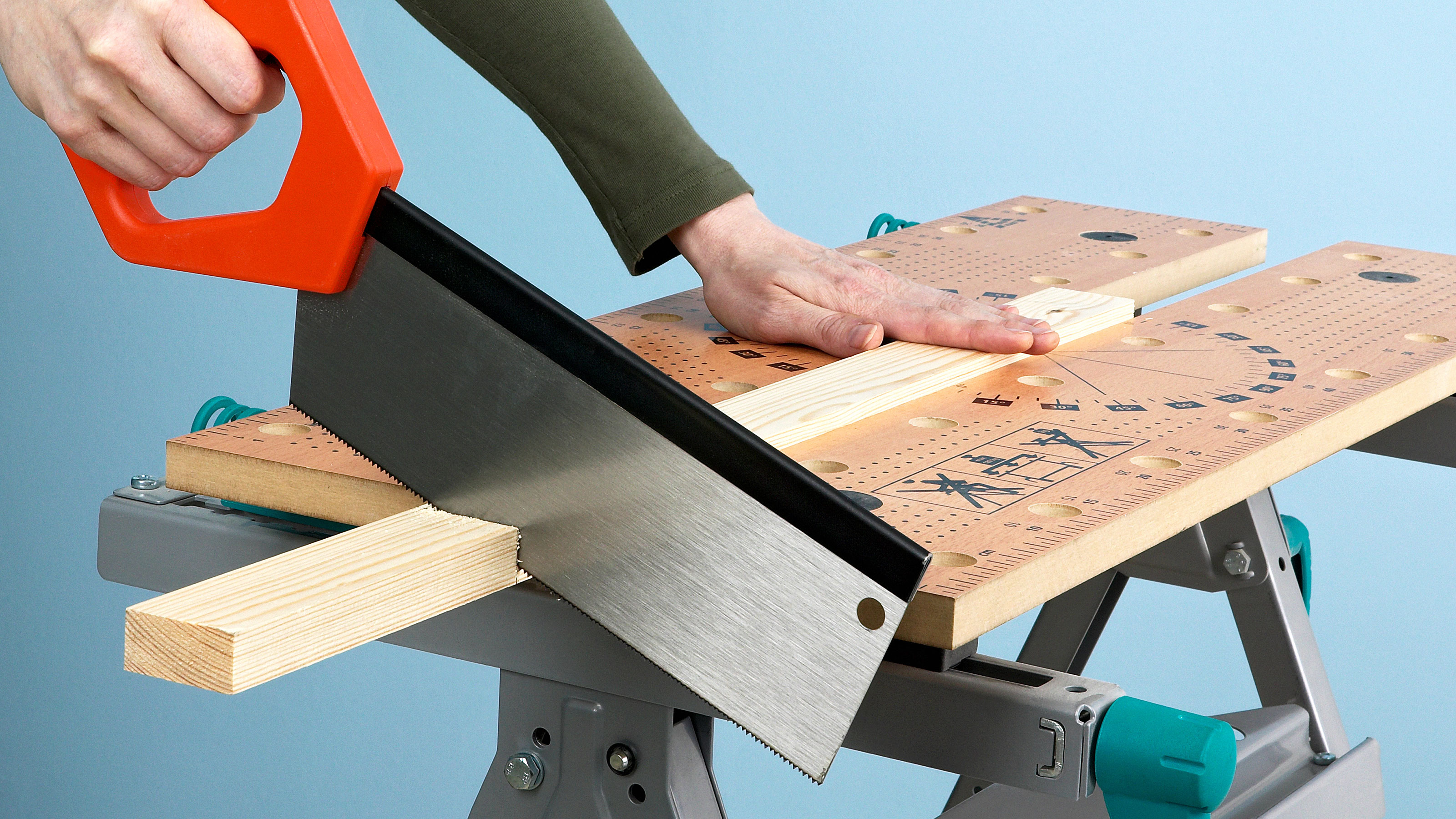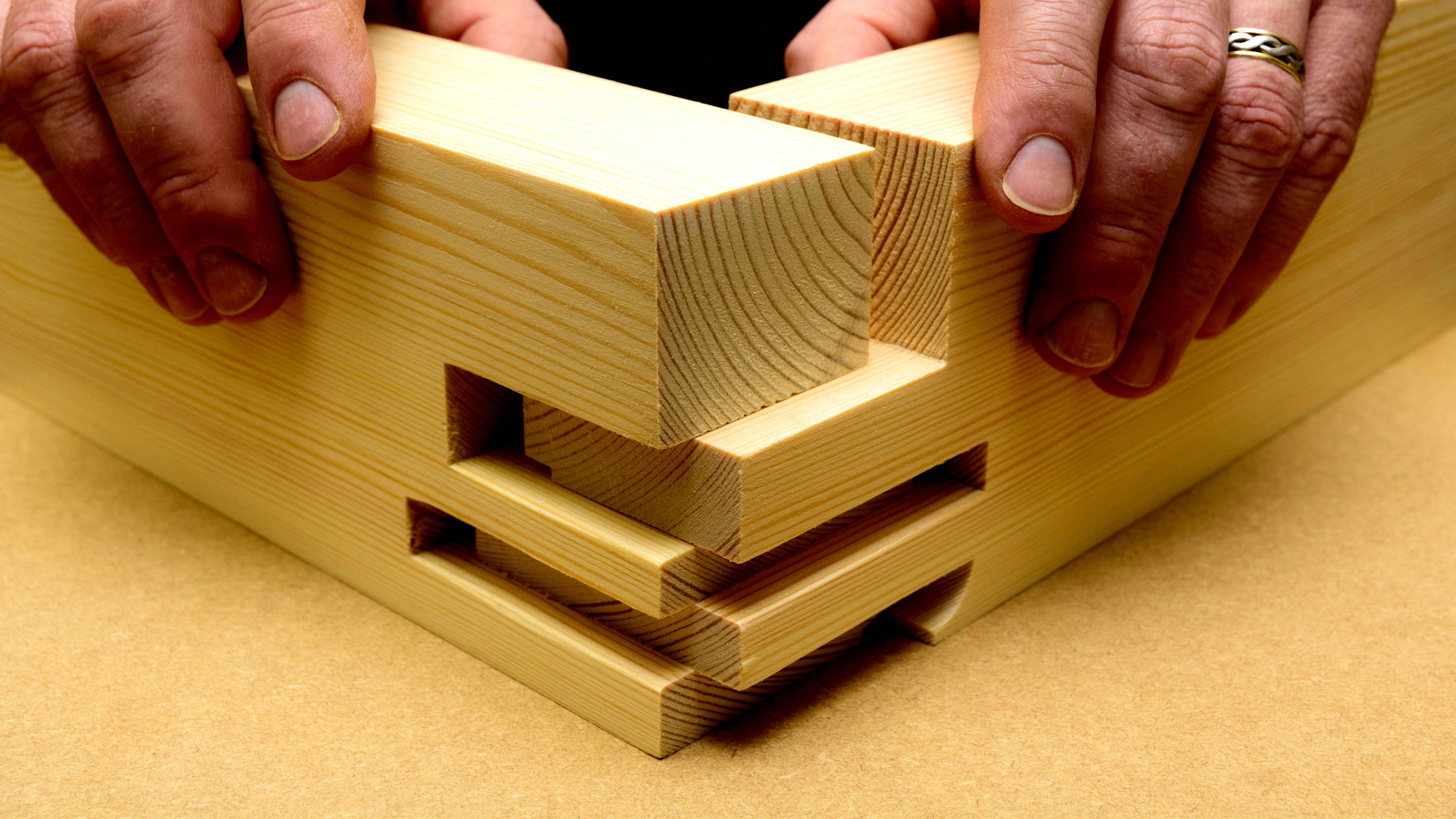What is a tenon saw used for? 5 answers to common questions
You’ve heard the name but what is a tenon saw used for? We take a look at what a tenon saw is, what materials it can cut and reveal why it has a brass back

What is a tenon saw used for? Surely a saw is a saw and they all do very much the same thing? Well, to a certain degree they do but it’s not that simple.
There are many different types of saw: wood saws, mitre saws, and circular saws are just a few, with each one designed for different jobs.
A wood saw is a general purpose tool for cutting timber but other saws such as a reciprocating saw and a tenon saw are more specialist. The best reciprocating saws are power tools that are great for demolition jobs while a tenon saw is a tool that gives accuracy and precision that's hard to find in other saws.
Here we take an in-depth look at exactly what a tenon saw is and how one should be used when carrying out your woodwork projects.
What is a tenon saw used for?
A tenon saw is a specialist saw that is used by carpenters to create neat, accurate cuts. It gets its name from the mortise and tenon joint that the saw was designed to create.
What type of saw is a tenon saw?
A tenon saw is a type of back saw and gets its name from the fact that it typically has a brass back. It is one of the larger types of back saw.
The saw plate or blade in a tenon saw is relatively short, typically around 250-300mm and has a depth of around 75mm-100mm. But there are oversized tenon saws available that have greater depths.
The back of the saw dictates how deep the user can cut, because as soon as the back of the saw hits the wood being cut, it cannot go any further. A tenon saw can be used for cutting skirting boards along with a mitre block for neat accurate cuts, but the brass back may restrict the height of skirting board you can cut.
What materials can a tenon saw cut?
A tenon saw is typically used for precision cutting so is used almost exclusively with wood — both softwoods and hardwoods.
They are often used by carpenters and furniture makers to make short, accurate cuts. As previously mentioned, they are commonly used in the creation of mortise and tenon joints, and as its name may suggest, typically for creating the tenon part of the joint.

Why does a tenon saw have a brass back?
Unlike reciprocating saws or circular saws (see our guide for circular saw uses), a tenon saw typically has a brass back. However, the back can be made from steel and more rarely wood — but the purpose for a metal or wood back is the same. The back of the tenon saw is there to give the saw blade more rigidity and stiffness, helping to keep it from flexing when in use.
This helps ensure that the blade stays straight when cutting. This in turn gives more accurate — and straight cuts – for a precision finish that is needed when making furniture. The added weight of the back also helps with the cutting motion.
What’s the difference between a tenon saw and dovetail saw?
A tenon saw and dovetail saw are both part of the back saw family along with sash saws. They are both similar in appearance and both have a brass or metal back to help with the accuracy of a cut. A tenon saw is the larger of the two and has a wider and thicker saw blade typically with less teeth than a dovetail saw. The teeth on a tenon saw are crosscut as it is typically used for cutting across the grain.
A dovetail saw — as the name suggests — is specifically designed for cutting dovetail joints, which are generally smaller than tenon joints, hence why they have shorter and thinner saw blades. They have more teeth and rip teeth for cutting along the grain.
How many teeth per inch does a tenon saw have?
As a general rule the more teeth per inch a saw blade has the finer the cut will be. This in turn gives the finished cut a neater finish.
A tenon saw will have around 10-14 TPI (Teeth Per Inch) with 12 or 13 TPI being a popular choice. This is less than other types of back such as a dovetail which has around 15-20 TPI, but is still perfectly adequate for the purpose it serves.
As a comparison example of TPI the best circular saws have circular blades that commonly have 24 TPI for rough cuts and 80 TPI for finer cuts. While a standard hand saw will have 8-10 TPI as they are used for everyday cuts rather than cuts that need a neat smooth cut like furniture.
Get the Homebuilding & Renovating Newsletter
Bring your dream home to life with expert advice, how to guides and design inspiration. Sign up for our newsletter and get two free tickets to a Homebuilding & Renovating Show near you.
Steve Jenkins is a freelance content creator with over two decades of experience working in digital and print and was previously the DIY content editor for Homebuilding & Renovating.
He is a keen DIYer with over 20 years of experience in transforming and renovating the many homes he has lived in. He specialises in painting and decorating, but has a wide range of skills gleaned from working in the building trade for around 10 years and spending time at night school learning how to plaster and plumb.
He has fitted kitchens, tiled bathrooms and kitchens, laid many floors, built partition walls, plastered walls, plumbed in bathrooms, worked on loft conversions and much more. And when he's not sure how to tackle a DIY project he has a wide network of friends – including plumbers, gas engineers, tilers, carpenters, painters and decorators, electricians and builders – in the trade to call upon.

